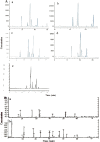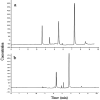Laboratory scale medicinal plants mediated green synthesis of biocompatible nanomaterials and their versatile biomedical applications
- PMID: 35844411
- PMCID: PMC9280260
- DOI: 10.1016/j.sjbs.2022.02.042
Laboratory scale medicinal plants mediated green synthesis of biocompatible nanomaterials and their versatile biomedical applications
Abstract
Nanoparticles and its green synthesis with plants have become an important field of nanoscience due it is great benefits provided to humanity through it and its cost effective, least harm to humans and the environment also, it offering a lot of application in biomedical research, diagnostics, and medicine as well as, drug manufacturing, improvement, or drug discovery. In this work, I focused on green synthesis nanoparticles with antioxidant involve in plants and the method for preparing them also the factors on which the extraction process depends on, spectroscopic techniques like UV-Visible, (TEM), (XRD), (IR), (EDX), (SEM), (HPLC), and zeta potential are use here.
Keywords: Applications; Characterization; Green synthesis; Nanoparticles; Nanotechnology.
© 2022 The Author(s).
Conflict of interest statement
The authors declare that they have no known competing financial interests or personal relationships that could have appeared to influence the work reported in this paper.
Figures



















Similar articles
-
Plant-Based Synthesis of Gold Nanoparticles and Theranostic Applications: A Review.Molecules. 2022 Feb 18;27(4):1391. doi: 10.3390/molecules27041391. Molecules. 2022. PMID: 35209180 Free PMC article. Review.
-
Effect of operational parameters, characterization and antibacterial studies of green synthesis of silver nanoparticles using Tithonia diversifolia.PeerJ. 2018 Oct 30;6:e5865. doi: 10.7717/peerj.5865. eCollection 2018. PeerJ. 2018. PMID: 30397553 Free PMC article.
-
Plant-based gold nanoparticles; a comprehensive review of the decade-long research on synthesis, mechanistic aspects and diverse applications.Adv Colloid Interface Sci. 2019 Oct;272:102017. doi: 10.1016/j.cis.2019.102017. Epub 2019 Aug 8. Adv Colloid Interface Sci. 2019. PMID: 31437570 Review.
-
Pharmaceutical and Biomedical Applications of Green Synthesized Metal and Metal Oxide Nanoparticles.Curr Pharm Des. 2020;26(45):5844-5865. doi: 10.2174/1381612826666201126144805. Curr Pharm Des. 2020. PMID: 33243108 Review.
-
Characterization and Anticancer Activities of Green Synthesized CuO Nanoparticles, A Review.Anticancer Agents Med Chem. 2021;21(12):1529-1543. doi: 10.2174/1871520620666201029111532. Anticancer Agents Med Chem. 2021. PMID: 33121417 Review.
Cited by
-
Plant-mediated green synthesis of gold nanoparticles using an aqueous extract of Passiflora ligularis, optimization, characterizations, and their neuroprotective effect on propionic acid-induced autism in Wistar rats.Saudi Pharm J. 2024 Feb;32(2):101921. doi: 10.1016/j.jsps.2023.101921. Epub 2023 Dec 15. Saudi Pharm J. 2024. PMID: 38283153 Free PMC article.
-
Single-step green synthesis of gold conjugated polyphenol nanoparticle using extracts of Saudi's myrrh: Their characterization, molecular docking and essential biological applications.Saudi Pharm J. 2022 Sep;30(9):1215-1242. doi: 10.1016/j.jsps.2022.06.028. Epub 2022 Jul 3. Saudi Pharm J. 2022. PMID: 36249941 Free PMC article.
-
Biosynthesis and biological activities of magnesium hydroxide nanoparticles using Tinospora cordifolia leaf extract.Bioprocess Biosyst Eng. 2024 Dec;47(12):2111-2129. doi: 10.1007/s00449-024-03089-y. Epub 2024 Sep 16. Bioprocess Biosyst Eng. 2024. PMID: 39284929
-
Microbial mediated silver nanoparticles enhance the potential of bioactive metabolites in the medicinal plant Linum usitatissimum.RSC Adv. 2025 Jan 31;15(5):3172-3182. doi: 10.1039/d4ra03104k. eCollection 2025 Jan 29. RSC Adv. 2025. PMID: 39896434 Free PMC article.
-
Green Synthesis of Platinum Nanoparticles for Biomedical Applications.J Funct Biomater. 2022 Nov 21;13(4):260. doi: 10.3390/jfb13040260. J Funct Biomater. 2022. PMID: 36412901 Free PMC article. Review.
References
-
- Abdelhalim M.A.K., Mady M.M., Ghannam M.M. Physical properties of different gold nanoparticles: ultraviolet-visible and fluorescence measurements. J Nanomed Nanotechol. 2012;3(3):178–194.
-
- Adetuyi F.O., Ibrahim T.A. Effect of fermentation time on the phenolic, flavonoid and vitamin C contents and antioxidant activities of okra (Abelmoschus esculentus) Seeds. Niger. Food J. 2014;32(2):128–137.
-
- Ahmed B.T., Kumar S.A. Antioxidant and Antidiabetic properties of Abelmoschus esculentus extract – an in vitro assay. Res. J. Biotechnol. 2016;11(3):34–41.
-
- Al-Radadi N.S. Artichoke (Cynara scolymus L.), Mediated rapid analysis of silver nanoparticles and their utilisation on the cancer cell treatments. J. Computat. Theoret. Nanosci. 2018;15:1818–1829.
-
- Al-Radadi N.S. Green synthesis of platinum nanoparticles using Saudi’s Dates extract and their usage on the cancer cell treatment. Arab. J. 2019;12(3):330–349.
Publication types
LinkOut - more resources
Full Text Sources

